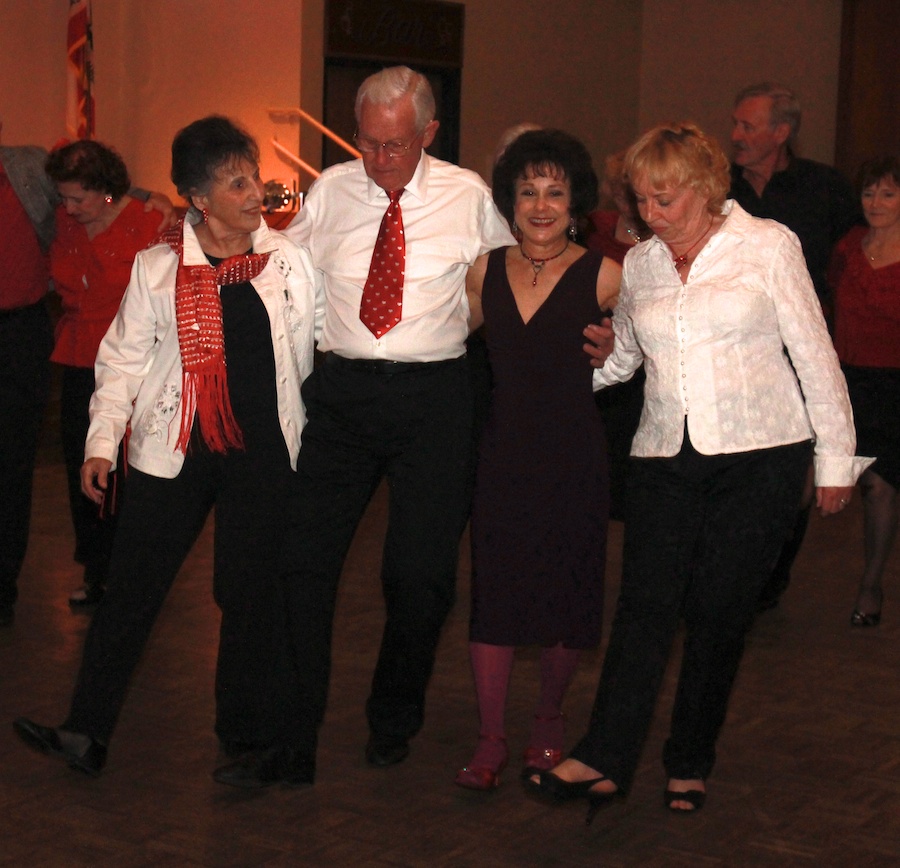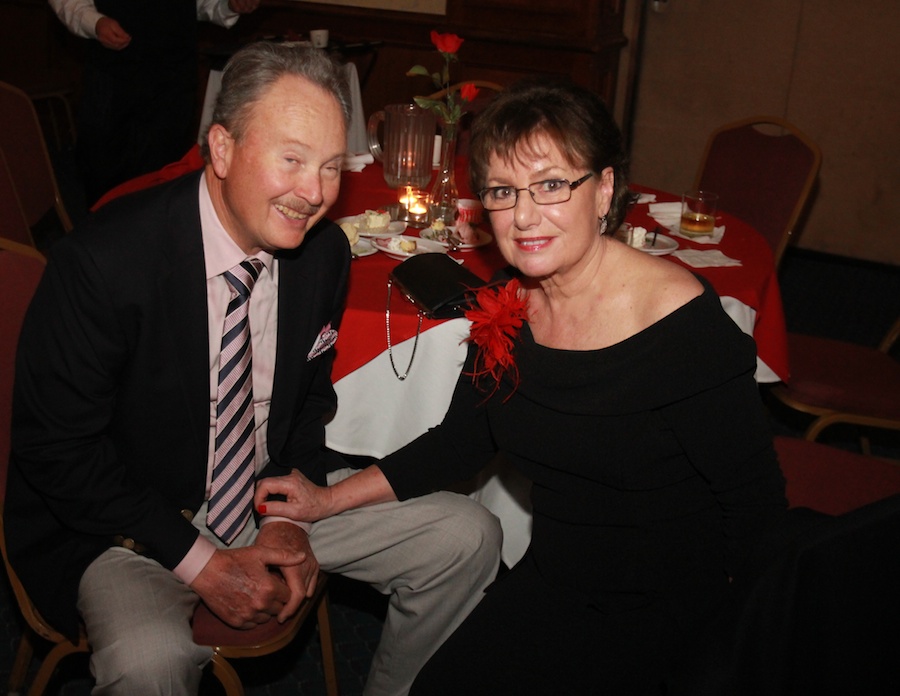Time To Continue The Dance.... (Page Six)

Let the fireworks begin

Time to dance... Kerstin and Roy
 Donnis consults with Sue and Paul*
Donnis consults with Sue and Paul*
* Paul is not contagious... Just doing battle with some skin cancer and the chemothearphy cream finds the pre-cancer and destroys it.... Takes several weeks... All is well!

Bernie focuses in
Did You Know? - In the Greek tradition, Eros was one of the primordial gods, though in some myths he was the offspring of other deities, including Aphrodite and Ares. In Latin literature, Cupid is usually treated as the son of Venus without reference to a father. Seneca says that Vulcan, as the husband of Venus, is the father of Cupid.
In the later classical tradition, however, Cupid is most often regarded as the son of Venus and Mars, whose love affair represented an allegory of Love and War.

The band was terrific this evening....

Watching those feet...

The ladies await their cues

"Oh oh... I can't find my music!"
Did You Know? - Cupid is winged because lovers are flighty and likely to change their minds, and boyish because love is foolish and irrational. His symbols are the arrow and torch, "because love wounds and inflames the heart." These attributes and their interpretation were established by late antiquity, as summarized by Isidore of Seville (d. 636 AD) in his Etymologies.
Cupid is also often depicted blindfolded and described as blind, not so much and the sense of sightless—since the sight of the beloved can be a spur to love—as blinkered and arbitrary.
Boys Will Be Boys

OMG... Those ties are NOT originals???

Paul demonstrates the next dance....

I guess it is true... They are NOT originals
Back To Dancing!
Did You Know? - Cupid carries two kinds of arrows, one with a sharp golden point, and the other with a blunt tip of lead. A person wounded by the golden arrow is filled with uncontrollable desire, but the one struck by the lead feels aversion and desires only to flee.

Cupid draws his bow as the river god
Peneus averts his gaze in
Apollo and Daphne (1625) by Poussin
The use of these arrows is described by the Latin poet Ovid in the first book of his Metamorphoses. When Apollo taunts Cupid as the lesser archer, Cupid shoots him with the golden arrow, but strikes the object of his desire, the nymph Daphne, with the lead. Trapped by Apollo's unwanted advances, Daphne prays to her father, the river god Peneus, who turns her into a laurel, the tree sacred to Apollo. It is the first of several unsuccessful or tragic love affairs for Apollo
A variation is found in The Kingis Quair, a 15th-century poem attributed to James I of Scotland, in which Cupid has three arrows: gold, for a gentle "smiting" that is easily cured; the more compelling silver; and steel, for a love-wound that never heals.

Hello there... We finally put the camera down.... Sort of...

Go Lynne

Whirl and twirl


Marcia and Leon
hit the floor
YMCA Time??

That's a "Y"???

"No silly... This is a Y"

Nancy and Vince brighten up the evening

Bernie and Donnis

OK... Follow me...
Turn to the left... Turn to the right... Stand up!... Sit down... Fight fight fight!

"Bernie! That does not sound quite right?"

Nancy and Paul

Paul signals the band to play a waltz....

We are movin'

Alice and Ernie... Always out and about
Simply Great Music

The Yachtsmen are great
Did You Know? - The Yachtsmen have been performing since 1980, mostly in Southern California. We currently perform each Thursday for dancing at the Phoenix Club in Anaheim, CA. We have performed the past 8 years for the New Years Eve Gala at the famous Catalina Casino.

Bang that tambourine
Did You Know? - The tambourine is a musical instrument in the percussion family consisting of a frame, often of wood or plastic, with pairs of small metal jingles, called "zils". Classically the term tambourine denotes an instrument with a drumhead, though some variants may not have a head at all. Tambourines are often used with regular percussion sets. They can be mounted, but position is largely down to preference.
Tambourines come in many shapes with the most common being circular. It is found in many forms of music: Greek folk music, Italian folk music, classical music, Persian music, gospel music, pop music and rock music.
Tambourines originated in Mesopotamia, Middle East, India, Greece and Rome, and were mainly used in religious contexts.
The word tambourine finds its origins in French tambourin, which referred to a long narrow drum used in Provence, the word being a diminutive of tambour "drum," altered by influence of Arabic tunbur "drum". from the Middle Persian word tambūr "lute, drum".

"We are saving ourselves for the next dance

"This is a Y"

... an "M"

"It's Valentines Day, we thought we would just look into each others eyes"

"She has pretty eyes"

"Such a romantic!"

Beauty and the beast

"Always a clown!"


